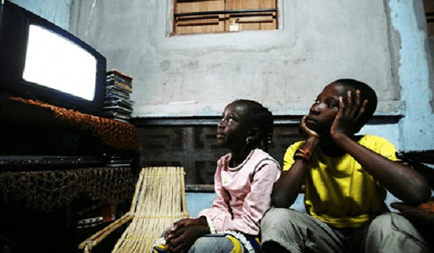The Ghana Multiple Indicator Cluster Survey, (MICS) for 2017/18, has revealed that only 60% Ghanaians own television sets between 2017 and 2018.
The MICS report further indicated that while nine in every ten households owned mobile phones, 57% of the people had radio, while 22% had internet at home. The report also said 15% Ghanaians had computers and less than 1% of the people owned fixed telephone lines during the period.
The findings are contained in the MICS summary report released by the Ghana Statistical Service (GSS) at a dissemination workshop held in Kumasi for stakeholders and the media from the middle zone. Participants were drawn from the Western North, Bono, Bono East, Ahafo and Ashanti regions.
In the Brong-Ahafo region, 89.2 owned mobile phones. 74.2% women in the region used mobile phones while 84.7% of men used mobile phones in the region.
53.7% of the people in the region had radio sets while 52.0% had television sets. Only 12.8% had computers while people with internet at home were just 18.7%. Only 6.4% of women used a compute with 14.7% of men in the region using a computer during the period. 5.7% of women performed at least one ICT activity while 14.3% of men performed at least one ICT activity.
Gender disaggregated internet usage in Ghana shows higher usage of the internet by men(35%) as compared to 15% of women.
Though mobile phone usage is high among both men and women, there is more utilization among men when compared to women (88% for men and 82% for women) There are considerable regional disparities in use of mobile phones.
In Greater Accra for instance nine in every ten of women used mobile phones against about half of women in the Upper West Region. There is relatively less gap in ownership of radios in rural and urban areas. While 59% of urban households in Ghana owned radio, in rural areas, radio ownership is 55%.
The ICT activities included; copying or moving a file/folder, copying and pasting duplicate or moving information in document, sending e-mail with a file (e.g. document, picture or video)
Others were; using a basic arithmetic formula in a spreadsheet, connecting and installing a new device, such as a modem, camera or printer, finding, downloading, installing and configuring software, creating an electronic presentation with presentation software, including text, images, sound, video or charts and transferring a file between a computer and other device.
The Multiple Indicator Cluster Survey Six (MICS ) is an international household survey programme developed and supported by UNICEF to collect estimates of key indicators that are used to assess the situation of children and women. It is a key source of data on child protection, early childhood education, and a major source of data on child health and nutrition.
In addition, MICS generates data for monitoring the progress towards national goals and global commitments that aim at promoting the welfare of children and also provides valuable data for the SDGs.
The MICS 6 was conducted in 2017/18 by Ghana Statistical Service (GSS) in collaboration with the Ministry of Health, Ministry of Education, Ministry of Sanitation and Water Resources, Ministry of Gender, Children and Social Protection, Ghana Health Service and the Ghana Education Service as part of the Global MICS Programme.
Technical support was provided by the United Nations Children’s Fund (UNICEF), with government funding and financial support of UNICEF, Korea International Cooperation Agency (KOICA), United Nations Development Program (UNDP), United States Agency for International Development (USAID) and the World Bank through the Statistics for Results Facility- Catalytic Fund (SRF-CF).
The Global MICS Programme was developed by UNICEF in the 1990s as an international multi-purpose household survey programme to support countries in collecting internationally comparable data on a wide range of indicators on the situation of children and women.
MICS surveys measure key indicators that allow countries to generate data for use in policies, programmes, and national development plans, and to monitor progress towards the Sustainable Development Goals (SDGs) and other internationally agreed upon commitments.
In addition, the Ghana MICS 2017/18 specific objectives were to: report on SDGs and the Ghana Medium-Term National Development Framework (2018-22) goals/targets , Strengthen data and monitoring systems in Ghana , identify vulnerable groups and disparities, which will inform social inclusion and poverty reduction policies and interventions.


